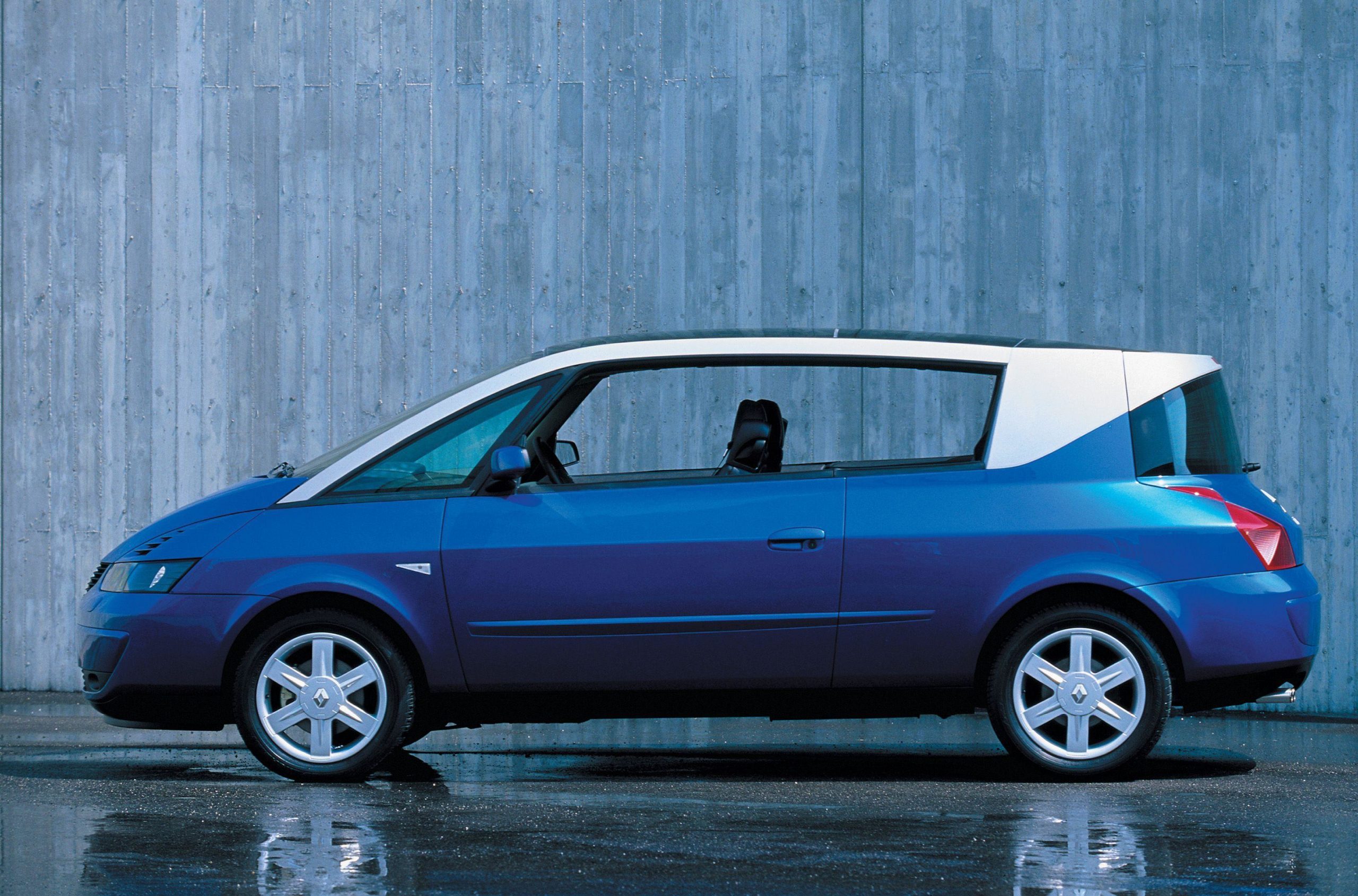Renault Avantime. A name, a destiny
Photo credit: Renault, Wheelsage
Renault cars have always stood out for their bold and original designs, and the Avantime is perhaps the most striking example of this. In 1984, the French manufacturer’s Espace, a hugely popular MPV, met with considerable success, delivering great sales volumes. The Espace was manufactured, for Renault, by Matra, an aerospace industry specialist that also boasted a strong motor sport tradition. Given the importance of the model, in 1991 Renault decided to introduce a new Espace model, moving the production in house.

Meanwhile, Matra was entrusted with another project, futuristic and unconventional. This materialized in the form of a car originally called the “CoupéSpace”. Presented in 1999 at the Geneva Motor Show, this concept car, renamed “Avantime”, combined the bodywork of a three-door coupé with the practicality of an MPV. It boasted bold new style features: for example, it eliminated the central pillar, and had a laterally arched, almost perfectly vertical, rear window, set above a clearly spacious trunk. The car was launched on the market in 2001, equipped with a 2946cc V6 engine with an output of 207 HP, a choice reflecting its top-of-the range status.

Sales were disappointing, however, so the Renault management, in an attempt to boost the fortunes of the car, decided to expand the range, adding other versions, with a 2.0-liter gas engine delivering 163 HP or a 2.2-liter diesel generating 150 HP. But the truth is, this was a car that customers were probably not yet ready to appreciate, and unfortunately, the lack of success persisted. Because of the low volumes manufactured, the production costs were disproportionately high. Therefore, after only two years on the market and with just 8000 units sold, the car was withdrawn.

The Avantime, as its name suggests, can probably be considered “too advanced” for the period in which it was launched. And yet, only 7 years later, BMW managed to create a new market segment with its X6, which combined the architecture of a coupé with the tall wheels of a SUV. Does the fact that the French three-door MPV, particularly the 3.0-liter V6 version, was produced in such limited numbers make it a great car to invest in? Is it destined to be a “future classic”? Quite possible, we would say.
